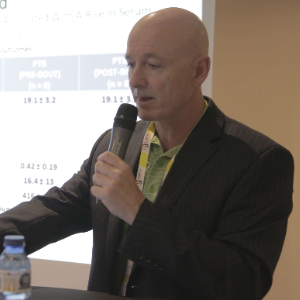Title : The use of the infrascanner to prevent head injuries in combat sport
Abstract:
Traumatic brain injuries (TBI) can be caused by a blow to the head, or sudden motions of the head, as in semi-contact or full contact sport and can result in death. The pathophysiology of TBI varies considerably depending on the location of the injury, within the brain and its severity. Severe injuries may lead to intracranial bleeds, large destruction of the brain tissue, and at worst death. The diagnosis of TBI is mainly based on a neurological examination of the patient and additionally using imaging radiology techniques such as computed axial tomography (CAT) or magnetic resonance imaging (MRI). The Glasgow Coma Scale (GCS) can be used to assess the severity of TBI on the basis of cognitive behaviour. A total score of 13–15 refers to mild TBI (mTBI), 9–12 to moderate TBI, and 3–8 to severe TBI. However, neurological examination by GCS has limitations and MRI and CAT scans are enormous pieces of equipment and not portable. Also, one CAT scan is equivalent to the electromagnetic radiation of 400 chest X-Rays. This concentration can be particularly harmful, to the traumatised brain.
The “Infrascanner” can provide field-based diagnosis and assist in the decision to evacuate an injured athlete to a hospital for immediate investigation and medical or surgical management, if required.
The “Infrascanner” can accurately detect intracranial haematomas using the unique light-absorbing properties of haemoglobin which is located within blood and the non-invasive, non-ionizing nature of Near Infrared (NIR) technology.
Enormous advantages of the “Infrascanner” for speed of diagnosis are:
- Portability (Weight: 400 grams)
- Patient measurement is completed within 2-3 minutes;
- It detects haematomas greater than 3.5 ml in volume;
- It detects haematomas up to 2.5 cm deep from the surface of the brain (or 3.5 cm from the skin)
Such technologically advanced equipment, should become mandatory in all boxing events, within a very short period. Failure to have the “Infrascanner” and personnel trained in its use will ultimately invalidate sporting licences and insurances and result in enormous medical negligence claims. Already in boxing, deaths from intracranial haemorrhages would have been prevented, if the “Infrascanner” had been present and be used as a diagnostic tool. Controlled Research Studies have already proven 80-100% sensitivity and 90-100% specificity
Audience take away:
- Head injuries are a common occurrence as a result of combat sport
- The resultant effect of a head injury can be a brain haemorrhage and catastrophic.
- The Infrascanner is a very sophisticated piece of equipment that is portable and capable of detecting small intracranial haemorrhages to permit urgent referral for tertiary medical assessment and so preventing further complications.




